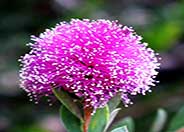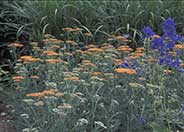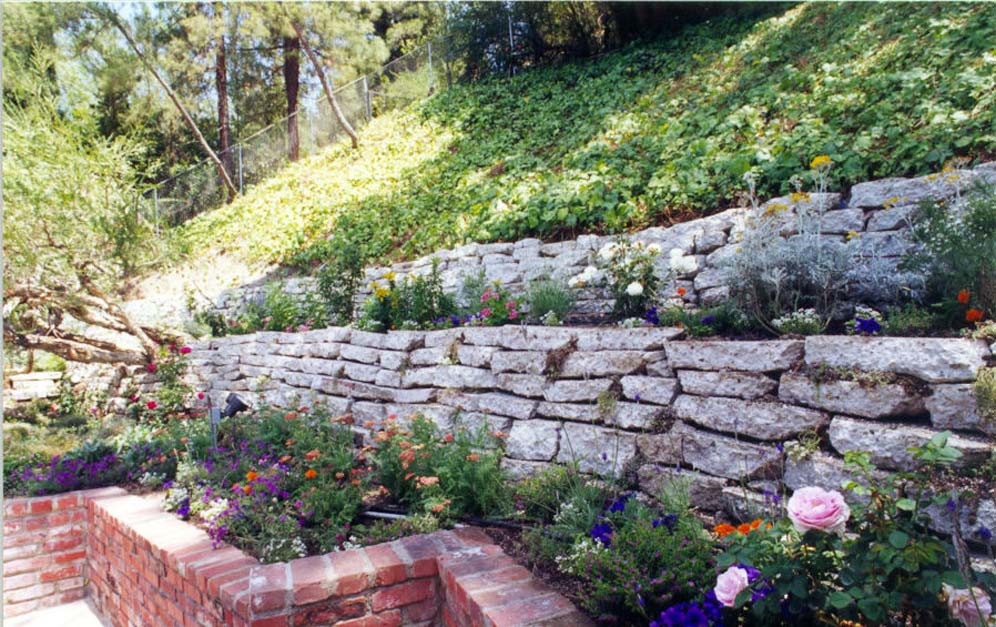
Common name:Pink Melaleuca
Botanical name:Melaleuca nesophila
This large shrub/small tree will grow quickly to 20' or 30' tall and 20'-30' wide. It has straggly branches with thick, gray green leaves and pinkish/white/yellow flowers that bloom most of the year.

Common name:Dusty Miller
Botanical name:Centaurea cineraria
This perennial plant won't grow more than 1' tall and has large, silvery white leaves with blue, purple, or yellow flowers that bloom in summer.

Common name:Terra Cotta Yarrow
Botanical name:Achillea millefolium 'Terra Cotta''
This millefolium is a hybrid with soft green foliage and flowers that start off a bright salmon color, fading to terra cotta and changing to buff. There are multi-colored blossoms on a single plant that bloom throughout summer. Yarrows propagate easily from rooted cuttings or division, which should be performed in the early spring or fall. Following bloom, one should dead head the plant and divide the clumps when it appears crowded.

Common name:English Ivy
Botanical name:Hedera helix
This evergreen vine has dark green leaves with pale green veins. When mature, clusters of small green flowers will bloom followed by black berries.

Common name:Hybrid Tea Rose (selections)
Botanical name:Rosa Hybrid Tea varieties
These shrubs and vines are the most loved in the Western USA and are very resilient. They come in a wide variety of sizes and colors and are easy to maintain with proper care. They can be used in a water-conserving garden with careful attention to irrigation practices.
Dealing With Drought
More than half of the water used at your home is for outside purposes. Studies show that on average, half of the water used outdoors is wasted. The leading cause of waste is incorrectly set and poorly managed irrigation controllers. The second biggest cause of wastage is broken irrigation equipment that goes undetected. There are a few basic things you can do to make a big difference in your water use.
Click in the green box for more information
| Designer: Amit Reichman | Broken Concrete Wall |
Photographer: Amit Reichman |
Soils and Compost:
Physical weed control, including mulching, or hand removal protects the watershed from harmful chemicals.
Water Saving Tip:
Be sure to fix all leaks promptly no matter how small they may seem.
Integrated Pest Management:
Attract, or buy beneficial insects such as ladybugs and lacewings to control pest outbreaks in your garden.

